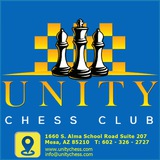Winner of the 1975 Amsterdam IBM tournament - Yugoslav grandmaster Ljubomir Ljubojević. He had just secured first place by winning his final-round game v. Robert Hübner in only 22 moves.
@UnityChess
@UnityChess
This media is not supported in your browser
VIEW IN TELEGRAM
Anatoly Karpov and Victor Korchnoi during their match in the final of the 1974 Candidates (Moscow, October 1974).
@UnityChess
@UnityChess
This media is not supported in your browser
VIEW IN TELEGRAM
🔸Gibraltar Masters 2018
🔸Round 10
⚪️Motylev,Alexander (2673)
⚫️Peralta,Fernando (2559)
🔸1-0
🔸Round 10
⚪️Motylev,Alexander (2673)
⚫️Peralta,Fernando (2559)
🔸1-0
This media is not supported in your browser
VIEW IN TELEGRAM
🔸Gibraltar Masters 2018
🔸Playoff - Rapid Rd1
⚪️Rapport,Richard (2700)
⚫️Aronian,Levon (2797)
🔸0-1
🔸Playoff - Rapid Rd1
⚪️Rapport,Richard (2700)
⚫️Aronian,Levon (2797)
🔸0-1
▪️ David Bronstein
▪️ Soviet Chess Grandmaster
♦️ David Ionovich Bronstein was a Soviet chess grandmaster, who narrowly missed becoming World Chess Champion in 1951.
🔹 Full name: David Ionovich Bronstein
🔹 Country: Soviet Union
🔹 Born: February 19, 1924 Bila Tserkva, Ukrainian SSR, Soviet Union
🔹 Died: December 5, 2006 (aged 82) Minsk, Belarus
🔹 Title : Grandmaster (1950)
🔹 Peak rating: 2595 (May 1974)
♦️David Bronstein was born in Bila Tserkva, Ukraine, to Jewish parents. Growing up in a poor family, he learned chess at age six from his grandfather. As a youth in Kiev, he was trained by the renowned International Master Alexander Konstantinopolsky. He finished second in the Kiev Championship when he was only 15, and achieved the Soviet Master title at age 16 for his second-place result in the 1940 Ukrainian Chess Championship, behind Isaac Boleslavsky, with whom he became close friends both on and off the chessboard. He later went on to marry Boleslavsky's daughter, Tatiana, in 1984.
♦️ A memorable game by Bronstein against Ludek Pachman in Prague which known "Pachman Ghosted" in chessgames.com site 👇🏼👇🏼
🔸 Ludek Pachman vs David Bronstein
🔸 Prague-Moscow (1946), Prague CSR, rd 2, Mar-??
🔸 King's Indian , Double Fianchetto Attack (A54)
♦️ Review and download PGN file👇🏼👇🏼
@unitychess
▪️ Soviet Chess Grandmaster
♦️ David Ionovich Bronstein was a Soviet chess grandmaster, who narrowly missed becoming World Chess Champion in 1951.
🔹 Full name: David Ionovich Bronstein
🔹 Country: Soviet Union
🔹 Born: February 19, 1924 Bila Tserkva, Ukrainian SSR, Soviet Union
🔹 Died: December 5, 2006 (aged 82) Minsk, Belarus
🔹 Title : Grandmaster (1950)
🔹 Peak rating: 2595 (May 1974)
♦️David Bronstein was born in Bila Tserkva, Ukraine, to Jewish parents. Growing up in a poor family, he learned chess at age six from his grandfather. As a youth in Kiev, he was trained by the renowned International Master Alexander Konstantinopolsky. He finished second in the Kiev Championship when he was only 15, and achieved the Soviet Master title at age 16 for his second-place result in the 1940 Ukrainian Chess Championship, behind Isaac Boleslavsky, with whom he became close friends both on and off the chessboard. He later went on to marry Boleslavsky's daughter, Tatiana, in 1984.
♦️ A memorable game by Bronstein against Ludek Pachman in Prague which known "Pachman Ghosted" in chessgames.com site 👇🏼👇🏼
🔸 Ludek Pachman vs David Bronstein
🔸 Prague-Moscow (1946), Prague CSR, rd 2, Mar-??
🔸 King's Indian , Double Fianchetto Attack (A54)
♦️ Review and download PGN file👇🏼👇🏼
@unitychess
📘 39...a2?
Nakamura's blunder in a winning position.
39...c4! (with the idea of ... c3) 40.Kc1 Kc5 41.Ne4+ Kb4 42.g4 f5 43.g×f5 Re8 43.f3 a2 44.Kb2 R×e4! -+
40.Kc1+ Kc3 41.Nd5+ Kc4 42.Kb2 Re8 43.Ne3+ +-
Nakamura's blunder in a winning position.
39...c4! (with the idea of ... c3) 40.Kc1 Kc5 41.Ne4+ Kb4 42.g4 f5 43.g×f5 Re8 43.f3 a2 44.Kb2 R×e4! -+
40.Kc1+ Kc3 41.Nd5+ Kc4 42.Kb2 Re8 43.Ne3+ +-
📘 39.Rd1! Qf4
(39...Qe7 40.R×d7! Q×d7 41.Q×a3 +-)
40.Rf1?
Vachier just needed a draw to advance to the final, so Nakamura had to take the risk. However, Naka could have won the game:
(40.R×d7 g×f5 41.g3 +-)
or
(40.Qh6+ 41.Kg3 Qg5 + 42.Kf2 +-)
(39...Qe7 40.R×d7! Q×d7 41.Q×a3 +-)
40.Rf1?
Vachier just needed a draw to advance to the final, so Nakamura had to take the risk. However, Naka could have won the game:
(40.R×d7 g×f5 41.g3 +-)
or
(40.Qh6+ 41.Kg3 Qg5 + 42.Kf2 +-)
📘 64...h4!
Vachier found the way to safety.
65.g4
(65.g×h4 Bd5! =)
65...h3 ½-½
Vachier With this draw advanced to the final, but Aronian Won Gibraltar Chess in Playoff anyway.
Vachier found the way to safety.
65.g4
(65.g×h4 Bd5! =)
65...h3 ½-½
Vachier With this draw advanced to the final, but Aronian Won Gibraltar Chess in Playoff anyway.
📘 15.B×c7+!
Pouria Darini finishes the game off with a beautiful combination.
15...K×c7 16.Nf4! Qf5 17.R×e7+ Kd6 18.R×a7 R×a7 19.R×b6+ Nc6 20.R×c6 Kd7 21.Qb5 1-0
Pouria Darini finishes the game off with a beautiful combination.
15...K×c7 16.Nf4! Qf5 17.R×e7+ Kd6 18.R×a7 R×a7 19.R×b6+ Nc6 20.R×c6 Kd7 21.Qb5 1-0
📕 8...g5!
This is the most ambitious way to play with Black. The theory considers it to give Black enough chances. Black exerts pressure on the White's central pawn on e5 by a flank attack!.
This is the most ambitious way to play with Black. The theory considers it to give Black enough chances. Black exerts pressure on the White's central pawn on e5 by a flank attack!.
